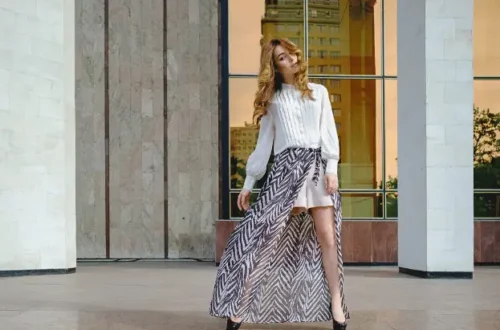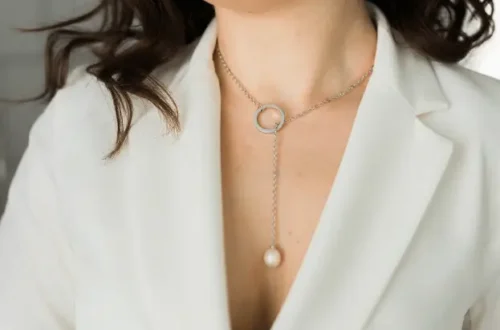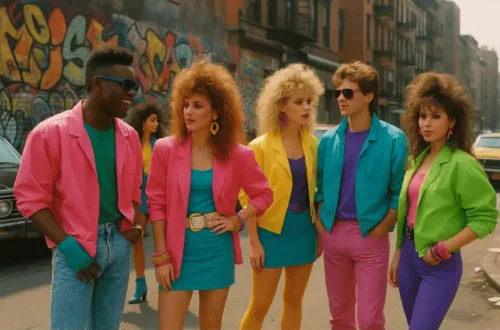
What Is Rococo Fashion? A Guide to Its Style & History
Rococo fashion is a beautiful and playful style that gained popularity in the early 1700s, particularly in France. Imagine soft pastel colors, elegant dresses, and intricate details—that’s what Rococo fashion was all about. Unlike the heavy and serious Baroque style, Rococo was light-hearted, full of delicate lace, and fun patterns. This fashion style was favored by the French aristocracy, including kings, queens, and nobles, who preferred to dress in luxurious fabrics such as silk and brocade. Rococo wasn’t just about clothing—it was about showing off wealth and style. Today, it continues to influence modern high fashion, with designers often drawing inspiration from this elegant era. Want to learn how this style changed the world of fashion forever? Keep reading!
Table of Contents
What is Rococo Fashion History?
Rococo fashion is a unique and distinct style that emerged during the 18th-century Rococo fashion era. It is known for its lightness, graceful designs, and delicate details. The fashion was a response to the heavier, more formal Baroque style, which was popular in the earlier part of the 17th century. Rococo fashion was influenced by the luxurious tastes of the French aristocracy, particularly the royal court of Louis XV and Louis XVI.
This style was characterized by its playful and ornate nature, with an emphasis on pastel colors, floral motifs, and intricate lace. The clothes were made from silks, brocades, and satin, which added to the opulence of the fashion. As Rococo-style clothing evolved, it became synonymous with grandeur, but also with a certain lightness that distinguished it from the previous era.
The Rococo fashion period was more than just a way of dressing; it was a statement of elegance, wealth, and individuality. Influenced by art, architecture, and Rococo painting style, this era transformed the way the elite viewed fashion. Whether through elaborate Rococo costumes worn at lavish court events or clothing in the Rococo style that emphasized softness and movement, it was a period when fashion truly became an art form.
Origins of Rococo Fashion
Rococo fashion began in France during the early 18th century, primarily in Paris, where the aristocracy embraced this lighter, more decorative style. The movement grew out of the Baroque fashion that preceded it, yet it was designed to be more fun, playful, and less rigid.
The Rococo fashion history is often tied to French court culture, where nobles sought to express their wealth and status through their clothing. French designers, such as Rose Bertin, became renowned for creating Rococo fashion for women, which was characterized by its luxurious materials and intricate detailing. Dresses were designed with soft, flowing fabrics, often in gentle pastel shades such as lavender, peach, and mint green.
In contrast to the stiff, structured garments of the Baroque period, Rococo fashion celebrated movement and ease of movement. Rococo-style clothing, available for both women and men, featured flowing lines, decorative trims, and an emphasis on natural beauty, creating a sense of lightness and freedom.

Key Characteristics of Rococo Fashion
The Rococo fashion era brought distinct characteristics that set it apart from its predecessors. The key elements of Rococo fashion are rooted in a sense of elegance, luxury, and delicate ornamentation.
Soft Pastel Colors and Fabrics
The 18th-century Rococo fashion was characterized by the use of pastel colors, with dresses, gowns, and suits featuring shades such as pale pink, powder blue, light green, and buttery yellows. The fabrics were equally luxurious, with silk and lace being the dominant materials. These soft, airy colors reflected the overall lightheartedness of the Rococo style.
Intricate Patterns and Embellishments
One of the most striking aspects of Rococo fashion details is the elaborate embroideries, lace trims, and floral motifs that adorned dresses, jackets, and accessories. The Rococo costume was often adorned with ribbons, pearls, and jewels, reflecting both wealth and creativity.
Elegant Silhouettes
The silhouettes of Rococo fashion for females and males were designed to be light and flowing. Women’s gowns featured low necklines, puffy sleeves, and wide skirts, often supported by hoops. Men wore fitted coats with elaborate lace cuffs, waistcoats, and breeches, which gave them a fashionable yet comfortable appearance.
Rococo Fashion and the French Aristocracy
During the Rococo fashion era, the French court played a pivotal role in shaping the direction of Rococo-style clothing. The fashion of the time was heavily influenced by the French nobility, particularly the royal family, including Queen Marie Antoinette, who was renowned for her extravagant yet refined fashion choices.
The French aristocracy adopted the Rococo style as a means to express their affluence and taste, utilizing Rococo costumes and clothing to distinguish themselves. Women’s dresses, such as the Robe à la Française, were characterized by their flowing lines and ornate detailing, while men’s coats featured luxurious brocades and elaborate embroidered designs.
The Rococo fashion trend not only influenced clothing but also impacted art, architecture, and even social behavior. The French court used fashion as a way to display their cultural dominance and exclusivity, making it one of the most famous periods for fashion in history.
Rococo Fashion in Art and Architecture
Rococo fashion wasn’t confined to just clothing; it was also deeply connected to the Rococo painting style and architectural designs. This era saw an explosion of elaborate, curvilinear designs in both art and interiors, with a focus on lightness, whimsy, and decoration.
Artists such as Antoine Watteau and Jean-Honoré Fragonard captured the essence of Rococo in their paintings, often depicting the aristocracy in their lavish attire. This helped spread the popularity of Rococo fashion as a symbol of wealth and elegance.
How Rococo Fashion Influenced Modern Styles
Rococo fashion continues to leave a lasting mark on modern fashion, influencing designers to this day. The 18th-century Rococo fashion was characterized by luxury, playfulness, and delicate details, which continue to inspire contemporary collections. Many fashion designers look back to the Rococo period for inspiration when creating runway collections and even historical costumes for movies and television.
Modern designers, such as Jean-Paul Gaultier, Chanel, and Vivienne Westwood, have often drawn inspiration from the Rococo fashion style, incorporating its soft fabrics, floral patterns, and elegant shapes into their own collections. Elements of Rococo style clothing can be seen in modern bridal wear, evening gowns, and haute couture, where intricate details and luxurious materials are central to the design.
In addition, elements of Rococo fashion, both female and male, such as puffy sleeves, lace, and decorative trims, have become popular in costume design for historical films. The ongoing revival of the Rococo style in various media ensures that the era’s fashion remains influential even in the 21st century.
The Decline of Rococo Fashion
As the Rococo fashion era drew to a close, the style began to decline in popularity by the late 18th century. The shift away from Rococo style clothing was primarily influenced by changing political and social conditions. The French Revolution in 1789 marked the end of the French aristocracy’s reign and the extravagant lifestyle associated with the Rococo era. The Neoclassical style, which emphasized simplicity and classical proportions, replaced Rococo’s ornate designs.
While the Rococo costume was associated with wealth and leisure, the rising political tensions and demand for a more democratic society led to the adoption of a more straightforward and practical fashion. Designers and artists shifted towards the Neoclassical style, which was more restrained and elegant but without the excessive ornamentation seen in the Rococo style.
Despite its decline, elements of Rococo fashion continue to influence today’s fashion world, particularly in historical recreations and luxury fashion collections. The style’s emphasis on beauty, decoration, and luxurious materials continues to inspire modern designers.
The Legacy of Rococo Fashion
The legacy of Rococo fashion remains evident today, as the style continues to influence fashion history and modern design. The Rococo fashion era was one of the most influential periods in fashion, and its decorative, light-hearted style is still celebrated in both historical fashion and high fashion.
Although Rococo fashion was eventually replaced by the more straightforward Neoclassical style, the details and elaborate designs of Rococo are still highly appreciated. The Rococo style clothing, particularly feminine gowns with intricate lace and decorative embroidery, can still be seen in modern couture fashion. The Rococo fashion female dress, with its puffy sleeves and corsets, is a popular design for historical films and costume parties, ensuring that the style’s legacy endures.
Moreover, Rococo details, such as floral patterns, lace trims, and soft pastel hues, have made their way into interior design, wedding fashion, and even modern accessories, including handbags and jewelry. Designers continue to appreciate the whimsical beauty and luxurious materials of Rococo, ensuring the style’s enduring timelessness.
Conclusion
Rococo fashion, which emerged during the 18th-century Rococo fashion era, remains a timeless symbol of luxury, creativity, and refined elegance. The style’s intricate details, delicate colors, and ornate designs transformed fashion during its time, and its influence is still seen today in modern fashion. Whether in haute couture, historical costume design, or pop culture, Rococo fashion has left a lasting mark on the world of fashion and design.
By understanding the history of Rococo fashion, its key characteristics, and its enduring influence on both past and present, we can appreciate how this whimsical, elegant style has shaped our perspective on fashion today.
Related Articles
- What Does Emo Look Like? The Complete 2025 Fashion Guide
- What Is Sustainable Fashion? How European Innovation and American Markets Are Revolutionizing Style
- What Is Harajuku Fashion? A Journey Through Color & Culture
- Why Slow Fashion Matters and How You Can Embrace It
- Rave Wonderland’s Best-Selling Outfits and Why They’reWorth the Hype
Is Catherine Palace Baroque or Rococo?
Catherine Palace features both Baroque and Rococo styles, but it is most famous for its Rococo interior design. The exterior was built in the Baroque style, while the lavishly decorated rooms, especially the Amber Room, reflect Rococo’s elegance and charm. So, it’s a blend, with Rococo stealing the spotlight inside.
Was Marie Antoinette Baroque or Rococo?
Marie Antoinette is closely associated with Rococo fashion, not Baroque. She loved pastel colors, floral patterns, and extravagant gowns that defined the Rococo style. Her personal taste helped spread Rococo fashion throughout the French court.
What best describes the Rococo style?
The Rococo style is light, elegant, and playful. It’s known for pastel colors, intricate decorations, flowing lines, and luxurious fabrics. Unlike Baroque, Rococo feels more romantic and relaxed, like fashion made for fairy tales.





